Special report: Now that the ruler of Dubai wants the city to be at the forefront of sustainable design, how will developers respond? Katie Puckett went to the United Arab Emirates to find out if the region really can have it all. With sustainable case studies.
ThereŌĆÖs something not quite right about the view from the 70th storey of the Al Mas tower. ItŌĆÖs not just the parade of brash skyscrapers stretching north along DubaiŌĆÖs Sheikh Zayed Road, nor the disconcerting fact that this 400m-high tower will soon be surrounded by more than 80 others, all taller than LondonŌĆÖs humble Gherkin. ItŌĆÖs not even the vast tracts of desert to the south, which will soon be concreted over to make way for a giant international airport, 100,000 parking spaces and as many as 700 skyscrapers.
No, what really jars is that, despite all this, the Gotham-on-steroids city below me is somehow tipped to become a pioneer of sustainable building design.
Mighty footprint
The United Arab Emirates, in which Dubai is the largest and flashiest city ŌĆō think of it as an Arabian Vegas ŌĆō has the largest ecological footprint of any nation, according to the World Wildlife Fund. Fear of becoming a pariah on the world stage has driven DubaiŌĆÖs ruler, Sheikh Mohammed, to decree from last month that every building should meet strict green guidelines. As yet, itŌĆÖs still a vague pronouncement, with the guidelines still to be hammered out. But when the Sheikh speaks, DubaiŌĆÖs developers listen. IŌĆÖve come to the Emirates with consultant Atkins to find out how they intend to respond.ŌĆ£In some respects, theyŌĆÖre moving very quickly,ŌĆØ says Richard Smith, AtkinsŌĆÖ technical director for the Middle East and India. ŌĆ£If they want to do something, they do it.ŌĆØ
Many Dubai developers are already investing in district cooling systems ŌĆō Smith says most of AtkinsŌĆÖ developments are connected to one ŌĆō which distribute chilled water around multiple buildings through underground pipes. These replace individual air-conditioning systems and are reckoned to be twice as efficient as air-cooled chillers. Last month there was the high-profile launch of developer NakheelŌĆÖs Blue Communities project, with backing from the Sheikh. This will commit 200m dirham (┬Ż28m) over three years to become a global authority on sustainable coastal communities.
Exemplar projects
Smith himself is working on several low carbon exemplar projects that far outstrip current standards in the UK. The 400m-high Lighthouse at the Dubai International Financial Centre aims to be the first skyscraper to achieve a platinum rating under the US LEED system, which is the equivalent of a BREEAM ŌĆ£excellentŌĆØ rating. If it makes it, it will be only the 18th building in the world to do so (see box, below).The Lighthouse will use 58% less electrical energy and 48% less water than DubaiŌĆÖs standard design. ŌĆ£WeŌĆÖve used a whole range of strategies,ŌĆØ Smith says. ŌĆ£None of them are rocket science but theyŌĆÖre rarely all put into practice together. WeŌĆÖve saved 50% of the energy without trying too hard ŌĆō it only goes to show how wasteful itŌĆÖs all been.ŌĆØ
Smith is vice-chair of the Emirates Green ║├╔½Ž╚╔·TV Council, which was set up in July 2006 but, unlike its relatives elsewhere in the world, has no full-time staff. SmithŌĆÖs day job leaves him little time to devote to the arduous task of adapting US standards to the local climate. ŌĆ£ItŌĆÖs been a pretty arduous process. We started with a clean sheet of paper. This is a country that doesnŌĆÖt know what green is and weŌĆÖre just a bunch of enthusiasts with no time to do the job. IŌĆÖm at home with a spreadsheet trying to make it work.ŌĆØ
ItŌĆÖs been a pretty painful process. This is a country that doesnŌĆÖt know what green is
Richard Smith, Atkins
Until clear guidance emerges, it seems that peer pressure is the key factor in getting things done. If some buildings do have good eco-credentials, global occupiers, with their CSR reports to worry about, will choose them over those slightly cheaper neighbours where the air-conditioning is on full blast. As Smith says: ŌĆ£TheyŌĆÖre worried sick about getting a horrendous reputation ŌĆō theyŌĆÖve got to sell real estate at the end of the day. If the world sees it as the most unsustainable place on earth, nobody will move here.ŌĆØ
ThereŌĆÖs an excellent example of sustainability as status symbol in the neighbouring island state of Bahrain, at the soon-to-be completed World Trade Centre. Shaun Killa, an architect at Atkins, has designed two slanting towers, like the sails of a ship, that will channel and amplify the islandŌĆÖs strong sea breeze over three 29m-diameter wind turbines strung between them. These are expected to generate 1,100-1,300MWh per year, 11-15% of the towersŌĆÖ energy requirements. This is the first time anyone has tried to integrate wind turbines into a building on this scale. The powers that be ŌĆō the ultimate client is always the Ruler hidden behind a shroud of secrecy ŌĆō hope the WTC will become an iconic symbol of Bahrain, and its responsible approach to the environment, around the world.
ŌĆ£Sustainability was part of the initial brief,ŌĆØ says senior project manager Simha LytheRao. ŌĆ£You have to give the client credit for making the decision to do something different.ŌĆØ
Hollow talk
But still, it is hard to reconcile this drive for sustainability with the insatiable demand for construction in this part of the world. Even as LytheRao proudly shows us the automated taps and dry urinals that will help to reduce the buildingŌĆÖs water demands, in the next breath he points out the walls of imported Portuguese marble and the Italian Carrera marble, the same kind that Michelangelo used to fashion David.This is a common theme throughout my visit. In order to sustain life in the desert, everything must be imported and, considering the scale of planned developments, thatŌĆÖs going to mean an awful lot of embodied carbon. With mountains of cash and a no-holds-barred attitude to luxury, all the talk of sustainable buildings, however exemplary, starts to sound a little hollow.
Smith says the most difficult part of reaching LEED platinum status is sourcing materials sustainably. HeŌĆÖs looking at ways to design out materials, like not using suspended ceilings, for example. Meanwhile, the government has talked about banning timber completely.
And yet, the approach to tackling most materials shortages ŌĆō and there is much anecdotal evidence of difficulties getting copper pipes, aluminium for cladding and concrete ŌĆō remains to use the EmirateŌĆÖs immense spending power to procure resources from elsewhere in the world.
ŌĆ£One of the biggest problems is glass,ŌĆØ says Malcolm Lanyon, senior projects manager on the Al Mas site. ŌĆ£Here we are living in a desert full of sand and we canŌĆÖt get glass. Some is made here, but itŌĆÖs imported from France, Germany, you name it.ŌĆØ Far below, we can see huge piles of glass panels stacked in the lake.
Here we are living in a desert full of sand and we canŌĆÖt get glass. Some is made here, but itŌĆÖs imported from France, Germany, you name it.
Malcolm Lanyon, senior projects manager on the Al Mas site
We can also see acres of new apartments and villas, prompting a more fundamental question of sustainability: who on earth is going to occupy all this space, and how many air miles will they rack up?

Dubai is in the throes of an extraordinary property boom ŌĆō apartments are bought off plan and sold on at a massive premium, often several times, before theyŌĆÖre completed. EveryoneŌĆÖs a property investor, but residents are harder to find. In the completed developments along the Sheikh Zayed Road, there arenŌĆÖt that many lights on at night. Smith says the target market for the 626 apartments in the Burj Dubai Lake hotel, another small Atkins project (just 25 times the size of the pitch at Wembley), is ŌĆ£someone who already has 10 apartments in other parts of the world. The new jetsetterŌĆØ.
But he still believes thereŌĆÖs no shortage of potential residents: ŌĆ£How many people live within four hoursŌĆÖ flying time? YouŌĆÖve got 1 billion in India, 100,000 million in Iran, 30-40 million in South Africa.ŌĆØ He also thinks that the relative freedoms of Dubai make it a haven from more oppressive regimes ŌĆō properties start as second homes but become primary ones.
Sustainable communities?
Still, it is hard not to come away with the impression that for much of the population their stay here is temporary, which is hardly a solid basis for developing sustainable communities. Some 300,000 people move here every year and a sizeable proportion of those newcomers must be connected with the construction boom. Not many seem to be planning to still be around in 10 or 15 years when the fruits of their labours are complete. Most confirm that while Dubai is the most exciting place in the world for an engineer or an architect to test themselves right now, it doesnŌĆÖt appeal long-term.Gazing down at the vast desert on one side, and the congested highway on the other, you have to marvel at how precarious life, and the lifestyles, in this desert are. You can get anything at a price, but like the people consuming it, itŌĆÖs all flown in. Smith suggests that DubaiŌĆÖs ruler could just pump resources into the development of a biofuel to power aeroplanes. ItŌĆÖs no more far-fetched that a lot of other things you come across in Dubai. The question is whether the combined might of money and the brightest engineering can overcome the inconvenient truths facing the planet.
World firsts in sustainability
The first building with 29m diameter wind turbines
Bahrain World Trade Centre, completing the first half of this year
The ŌĆ£sailsŌĆØ of this 240m twin-towered building act as aerofoils, funnelling BahrainŌĆÖs strong sea breeze over three wind turbines in the centre, 160m up. At full tilt, the turbines can do 210kmph at the tips. Last November, they were tested at 180kmph and the engineers say you canŌĆÖt hear a thing from inside the building.
The turbines are the standard types used for large-scale power generation in the UK, but this is the first time theyŌĆÖve been put into a building. The three 29m wind turbines are predicted to generate between 1,100 and 1,300MWh, or 11-15% of the towersŌĆÖ energy requirements, or the equivalent of 55,000kg of carbon per year in the UK. Atkins estimates that the cost of adding the turbines was only 2-3% of the construction value of the project.
The first skyscraper to get a LEED platinum rating
DIFC Lighthouse, at concept stage
A 400m tower, with 64 storeys of offices and, above them, three horizontal-axis wind turbines integrated into the facade. The building also has an entire wall made of photovoltaic panels to generate solar energy, and together Atkins hopes the renewables will generate 10% of the buildingŌĆÖs energy needs. The building is designed to let in light but not heat, minimising lighting and cooling requirements. It is attached to a district cooling system, and has ŌĆ£hundredsŌĆØ of energy and water-saving measures, including chilled beams, low-energy lighting, advanced lighting controls, low-energy car park ventilation and lighting and an intelligent building management system. Atkins expects the Lighthouse to use 48% less water and 58% less energy than DubaiŌĆÖs standard designs.
The first eco-city in the desert
Masdar City, at concept stage
This Foster + Partners-designed development in Abu Dhabi has been billed as the worldŌĆÖs first zero-carbon, zero-waste city. It will be home to 47,500 people with an additional working population of 60,500, and has been planned on traditional Arabic lines with a high-density town plan of rectilinear blocks. Photovoltaic cells will be draped over rooftops, electric taxis and a light rail system will transport people, and wind farms and recycling plants will be located outside the city walls.
It is claimed that the ŌĆ£headquartersŌĆØ of the city, which is being designed by Adrian Smith + Gordon Gill Architecture of Chicago, will be the worldŌĆÖs first large-scale, mixed-use ŌĆ£positive energyŌĆØ building ŌĆō that is, one that produces more energy than it consumes.
Postscript
This article appeared in Buildign magazine on 29/02/08 under the headline What the Sheikh wants
The ║├╔½Ž╚╔·TV Gulf Awards take place on 13 November at the Madinat Jumeirah Hotel in Dubai.






















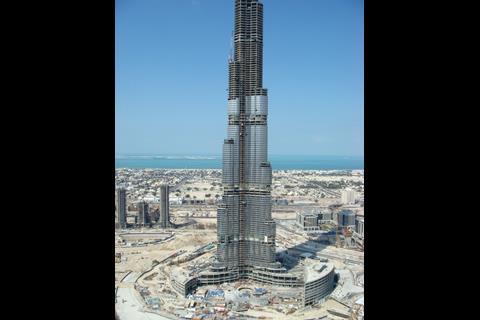
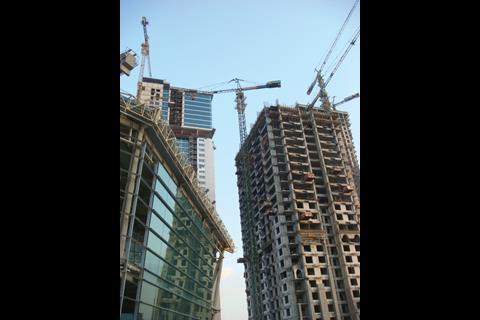


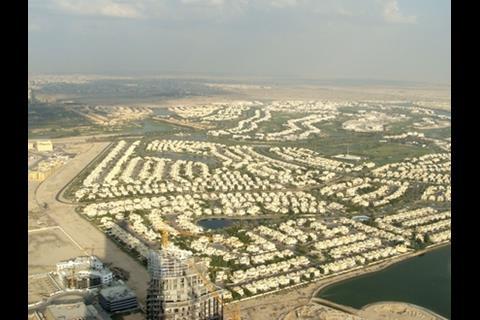

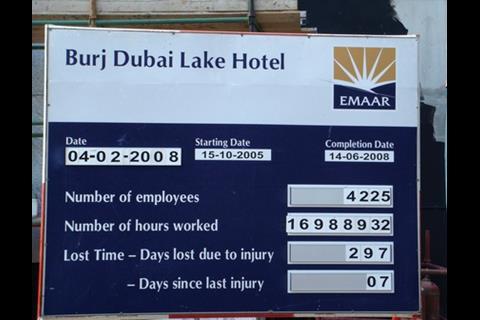
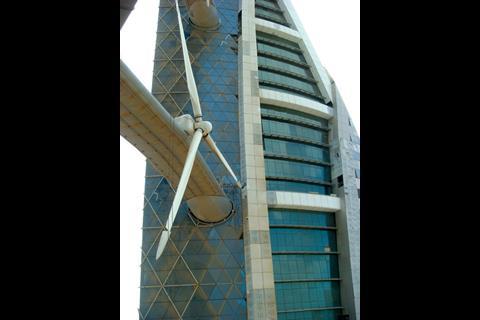

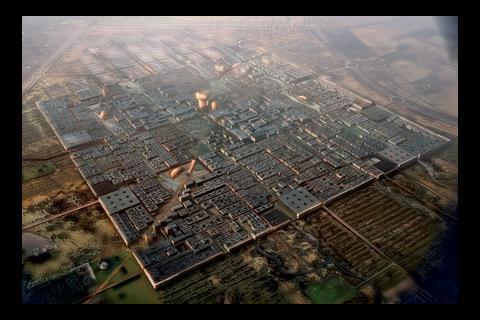





2 Readers' comments